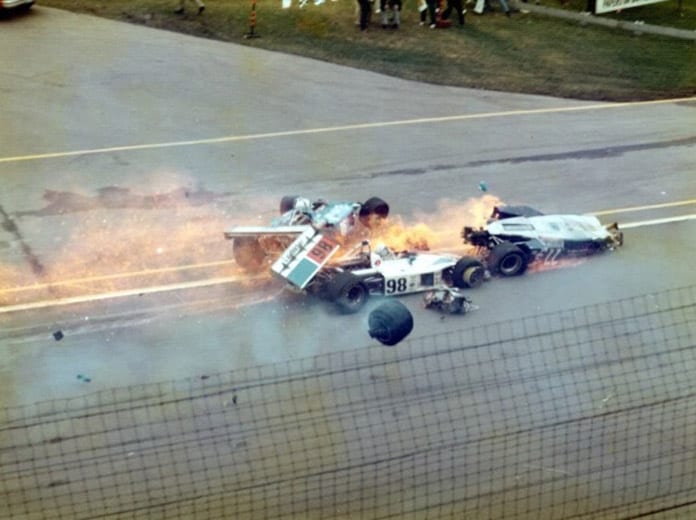When practice opened for the 57th 500 in May 1973, it was met with near giddy expectations from fans, media and competitors. It turned out to be a race that many would end up wishing they could forget.
Auto racing had been heralded as “The Sport of the ’70s,” and Indianapolis, in particular, exemplified that lofty proclamation with heightened media focus and fan interest.
Wings were first being tried on the cars, causing speeds at Indy to jump 30 mph during the decade’s first three years. After Bobby Unser grabbed the pole at over 195 mph in 1972 and Gordon Johncock exceeded 199 mph during Goodyear tire testing in late March 1973, the possibility of a 200 mph lap at Indianapolis had the racing community in a frenzy.
The excitement built through the early practice days. On the Friday before the first qualifying weekend, fans packed the speedway, anxious to witness a 200 mph lap. That didn’t happen, but Swede Savage got within a few hundredths of a second and speculation about what Pole Day would bring escalated.
More than 200,000 spectators jammed the speedway on Saturday, expecting a festival of speed. Instead, they experienced tragedy. During morning practice, popular five-time starter Art Pollard lost control of his Eagle in turn one. The car pounded the concrete wall, flipped and finally ground to a stop in turn two. Pollard was dead.
A pall fell over the crowd and time trails turning anti-climatic did little to brighten the day. Oh, speeds were fast as Johnny Rutherford won the pole with a track record. But, his best lap fell just short of the anticipated 200 mph mark.
Pole Day seemed to mark the beginning of a slide into ugliness for the once highly anticipated month. Rain came and practice speeds plummeted. The third day of qualifying was lost to thunderstorms, hail and a tornado. On the day before the race, tornadoes again ravaged central Indiana. All hoped this signaled the end of trouble, but unfortunately it was merely the beginning.
Race day brought rain. Not a downpour.; just ugly, dark, low-hanging clouds that steadily wept moisture.
An announcement came late in the afternoon. Not the expected postponement, but an attempt to start the race. Concerns were voiced that officials were acting hastily, desperately trying to get the race in. An ominous feeling that something bad would happen permeated the grounds. Sure enough, just as the first few rows of the field had passed the starting line all hell broke lose.
Salt Walther, starting mid-pack, lost control in a group of tightly bunched cars that were jostling for position. A fiery chain-reaction accident ensued. Jim McKay, hosting the ABC telecast, shouted, “This is what everyone has feared! This is why there’s been such a terrible atmosphere of fear all weekend long.”
Walther’s car shot sharply to the right, struck Jerry Grant’s car, went airborne and flew into the frontstretch fence. The car’s front half was ripped off, exposing Walther’s vulnerable feet and legs and spraying the crowd with fuel, fire and debris. Ricocheting off the fence, Walther’s car pin-wheeled down the track upside down, spewing fuel in all directions.
When he ground to a stop, the worse was expected. Walther, however, survived. After a long recovery, he healed physically and raced again. But he became addicted to pain killers, fighting the life-wrecking dependency the rest of his days. He died of an overdose on Dec. 27, 2012.
The drivers of the other 11 cars involved in the melee escaped serious injury. Spectators were not as fortunate as a dozen were injured. Two teenage girls were seriously burned.
While the race was red flagged, the rain everyone had expected arrived and the 500 was postponed until the next day.
Click below to keep reading.
